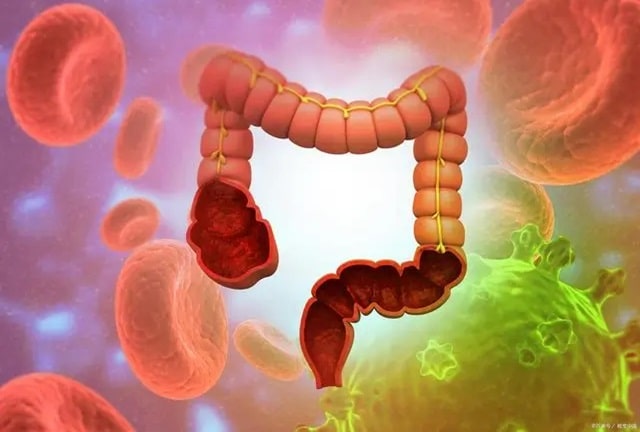If you or a loved one has been diagnosed with anal cancer, you may be wondering what this condition is, how it develops, and what treatment options are available. Anal cancer is a rare type of cancer that affects the tissues or lining of the anus, causing uncomfortable symptoms such as rectal bleeding, anal pain, and lumps. While it’s not as well-known as other types of cancer, it’s imperative to be aware of the risk factors, diagnosis, treatment options, and outlook for this condition. In this article, we’ll probe into the world of anal cancer, exploring its definition, causes, symptoms, diagnosis, treatment options, and prevention strategies, empowering you with the knowledge you need to take control of your health.
Definition and Overview of Anal Cancer
Your understanding of anal cancer begins with knowing what it is and how it affects the body.
What is Anal Cancer?
Definition of anal cancer: Anal cancer is a type of cancer that affects the tissues or lining of the anus. It occurs when abnormal cells in the anus grow and multiply uncontrollably, forming a tumor. These tumors can be benign (non-cancerous) or malignant (cancerous).
Types of Anal Cancer
There are several types of anal cancer, including:
- Squamous cell carcinoma: The most common type, accounting for about 80% of cases, develops in the cells lining the anus.
- Adenocarcinoma: Less common, accounting for about 10-20% of cases, develops in the glandular cells of the anus.
- Basal cell carcinoma: Develops in the skin around the anus.
- Melanoma: Develops in the skin around the anus.
- Lymphoma: Develops in the lymphatic tissue in the anus.
The information should be broken down into the following table:
| Type of Anal Cancer | Description |
|---|---|
| Squamous cell carcinoma | Develops in the cells lining the anus, accounting for about 80% of cases |
| Adenocarcinoma | Develops in the glandular cells of the anus, accounting for about 10-20% of cases |
| Basal cell carcinoma | Develops in the skin around the anus |
| Melanoma | Develops in the skin around the anus |
| Lymphoma | Develops in the lymphatic tissue in the anus |
Cancer can occur in different parts of the anus, including the anal canal, anal margin, and perianal skin. One important thing to note is that early detection and treatment can improve outcomes and increase the chances of a full recovery.
The types of anal cancer can be further explained as follows:
- Squamous cell carcinoma is often caused by infection with the human papillomavirus (HPV).
- Adenocarcinoma is often associated with a history of anal fistulas or abscesses.
- Basal cell carcinoma and melanoma develop in the skin around the anus.
- Lymphoma develops in the lymphatic tissue in the anus.
- The choice of treatment depends on the stage of the cancer, the size and location of the tumor, and the patient’s overall health.
The information should be broken down into the following table:
| Type of Anal Cancer | Description |
|---|---|
| Squamous cell carcinoma | Often caused by HPV infection |
| Adenocarcinoma | Often associated with a history of anal fistulas or abscesses |
| Basal cell carcinoma | Develops in the skin around the anus |
| Melanoma | Develops in the skin around the anus |
| Lymphoma | Develops in the lymphatic tissue in the anus |
The treatment for anal cancer can be complex and may require a combination of treatments. The patient’s healthcare team will work with them to develop a treatment plan that is tailored to their specific needs.
Causes and Risk Factors of Anal Cancer
Some people are more likely to develop anal cancer due to certain risk factors. Understanding these risk factors can help you take steps to reduce your risk and detect the cancer early, when it’s easier to treat.
- Infection with human papillomavirus (HPV)
- Weakened immune system
- Engaging in anal sex
- Smoking
- History of cancer in other parts of the body
Knowing your risk factors can help you take control of your health and seek medical attention if you experience any symptoms.
Human Papillomavirus (HPV) Connection
One of the most significant risk factors for anal cancer is infection with human papillomavirus (HPV). HPV is a group of viruses that can cause changes in the cells of the anal canal, leading to cancer. In fact, about 90% of anal cancers are linked to HPV infection.
Other Risk Factors
With a weakened immune system, you’re more likely to develop anal cancer. This is because your immune system plays a crucial role in fighting off cancer cells. Additionally, smoking, a history of cancer in other parts of the body, and engaging in anal sex can also increase your risk.
- Smoking: Weakened immune system and increased risk of cancer
- Weakened immune system: Reduced ability to fight off cancer cells
- History of cancer: Increased risk of developing anal cancer
- Anal sex: Increased risk of HPV transmission
After understanding these risk factors, it’s crucial to take steps to reduce your risk and seek medical attention if you experience any symptoms.
The good news is that many cases of anal cancer can be prevented through vaccination against HPV and practicing safe sex. Regular screening is also crucial for early detection and treatment of anal cancer. By being aware of your risk factors and taking proactive steps, you can reduce your risk of developing anal cancer.
Symptoms and Diagnosis of Anal Cancer
Not everyone with anal cancer will exhibit symptoms, especially in the early stages. However, it’s vital to be aware of the signs and symptoms to ensure early detection and treatment.
Recognizing Symptoms
Any unusual changes in your anal area, such as rectal bleeding, blood in your stool, anal pain, itching, or a lump or mass at the anal opening, should prompt you to seek medical attention. These symptoms can also be caused by other conditions, so it’s crucial to consult a doctor for an accurate diagnosis.
Diagnostic Procedures
The diagnostic process typically begins with a physical exam and medical history review. Your doctor may also order imaging tests, such as a CT scan or MRI, to look for abnormalities in the anal area.
It is vital to note that a biopsy is usually performed to confirm the presence of cancerous cells. During a biopsy, a small piece of tissue is removed from the anal area and examined under a microscope. Additionally, your doctor may perform a digital rectal exam to check for any abnormalities in the rectum or anal canal.
Treatment Options for Anal Cancer
All treatment plans for anal cancer are tailored to the individual patient, taking into account the stage of the cancer, the size and location of the tumor, and the patient’s overall health.
Surgical Treatments
The goal of surgical treatments is to remove the cancerous tissue in the anus. The type of surgery used depends on the size and location of the tumor. In some cases, the surgeon may remove only the tumor and a small margin of healthy tissue. In other cases, the entire anus may need to be removed, a procedure called an abdominoperineal resection (APR).
Radiation Therapy
Options for radiation therapy include external radiation therapy, where a machine outside the body delivers radiation to the cancerous tissue, and internal radiation therapy, where a small amount of radioactive material is placed inside the body near the tumor.
A common approach to radiation therapy is to use it in combination with chemotherapy. This can help shrink the tumor and make it more manageable for surgery. Radiation therapy can also be used to relieve symptoms such as pain, bleeding, or bowel obstruction.
Chemotherapy
One of the primary goals of chemotherapy is to kill cancer cells or slow their growth. Chemotherapy can be given intravenously or orally, and it’s often used in combination with radiation therapy.
Understanding how chemotherapy works is important for managing expectations and side effects. Chemotherapy can cause side effects such as nausea, vomiting, and hair loss, but these can often be managed with medication and other supportive care.
Prevention and Screening for Anal Cancer
Keep in mind that prevention and early detection are key in managing anal cancer. By taking certain steps, you can reduce your risk of developing this condition and improve your chances of successful treatment.
Reducing the Risk of Infection and Transmission of HPV
Screening for HPV and taking steps to prevent infection can significantly reduce your risk of developing anal cancer. Since HPV is a sexually transmitted infection, practicing safe sex and getting vaccinated against HPV can help prevent infection.
Vaccination against HPV
For individuals who are not yet sexually active, vaccination against HPV is an effective way to prevent infection. The HPV vaccine is recommended for both men and women, ideally before they become sexually active.
For instance, the Centers for Disease Control and Prevention (CDC) recommend that all children aged 11-12 receive the HPV vaccine as part of their routine vaccination schedule. Additionally, individuals who are not yet vaccinated can still benefit from the vaccine up to age 26.
Condom Use
With consistent and correct use, condoms can provide some protection against HPV and HIV. While they are not 100% effective in preventing infection, they can still reduce your risk of developing anal cancer.
Reducing your number of sexual partners and avoiding risky sexual behaviors can also help prevent HPV infection. It’s important to practice safe sex and get tested regularly for sexually transmitted infections (STIs).
Regular Screening for Anal Cancer
An important aspect of preventing anal cancer is regular screening. If you’re at high risk for anal cancer, such as if you have a history of HPV infection or a weakened immune system, regular screening can help detect precancerous lesions or early-stage cancers.
Condom use and vaccination against HPV are crucial in preventing anal cancer, but regular screening can also play a vital role in detecting any abnormal changes in the anus. By discussing your risk factors and screening options with your healthcare provider, you can determine the best course of action for your individual situation.
Summing up
On the whole, understanding anal cancer is crucial for early detection and effective treatment. You now know that anal cancer is a rare type of cancer that can cause uncomfortable symptoms, and its risk factors include HPV infection, a weakened immune system, and anal sex. By being aware of these risk factors and recognizing the symptoms, you can take proactive steps to prevent and detect anal cancer early, improving your chances of a full recovery. Bear in mind, treatment options are available, and with the right approach, many people are able to lead healthy, fulfilling lives after treatment.


